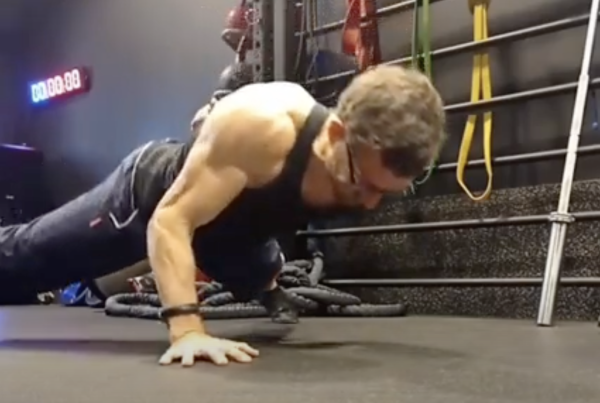Many of your clients may think that working on their core is only good for building abs but, as we know, abdominal muscles play an important part in a lot of movement that we do every day. Any lifting, twisting and standing all rely on our core muscles. However, even less obvious tasks like sitting at our desks for hours engage our core as well.
A weakened core can lead to lower back pain and, in the most serious cases, it can lead to disability. It was found that 11% of the total disability of the UK population is caused by just lower back pain.1
As a woman, having a strong core is especially important during times when you will be experiencing abdominal muscle wall changes; for example, the periods following pregnancy, childbirth and menopause where your body goes through a number of changes. During this time, the body is far more susceptible to injury or damage of the pelvic floor, spine and pelvis. It is imperative for fitness professionals to support female clients during these periods in a safe and effective way, with a strong understanding of the effects that pregnancy and menopause have on the body.
Our Continued Professional Development 100 Steps to Plank: Building abdominal strength for every female client, part 1 & part 2 has been tailormade to provide you with the information you need to support these types of clients.
Below is a snippet from 100 Steps to Plank: Building abdominal strength for every female client, part 1 where course author Dianne Edmonds outlines how you should check your client’s starting point by getting them into baseline positions.
Testing the starting point
When checking your client’s starting point, if your history and initial fitness testing/observations indicate that there could be abdominal wall weakness, using test baseline positions as starting points allows further checking of the recruitment patterns of:
1.Their deep abdominal muscles (transversus abdominus with internal oblique action)
2.Their Pelvic Floor, ensuring they have an awareness to check that there is no bearingdown or breathhold occurring when building exercises
3.The co-contraction ability between the pelvic floor, the lower and deeper abdominal wall,and breathing patterns.
If someone’s set point in a baseline position isn’t steady, then limit progressions until they have a more solid baseline in that particular starting point.
In each baseline position used with training, there needs to be an underlying level of stability and core control to be a base on which movement is enabled.
If your client’s abdominal muscle wall has been lengthened and is untrained for example since previous pregnancies, the building up from the baseline Steps provides a solid foundation on which to build the next Steps.
With each position an assessment can be made of:
- the recruitment strategies that the client uses
- the number of repetitions that can be performed with good technique
- the endurance of the muscle hold within the core
- the changes that occur with fatigue
Baseline test positions
There is a range of options from baseline starting positions which start with no loading and progress to using arm or leg loading, with build up to resistance with Steps and progressions. For example in supine or sitting a single leg loading test can be built in as an assessment tool, to enable appropriate planning of their core training level.
Each position starts with a baseline and progressively adds movement, control and load.
Levels of exercise load can then be applied to the client to match their core control level.
Each starting position is one where clients can set themselves first, stay aligned and work their pelvic floor and deep abdominals, building up their steps as you work with them to build their number of repetitions, hold time and sets without fatigue.
For more advice testing your client’s baseline purchase the full 100 Steps to Plank: Building abdominal strength for every female client, part 1 course.
These courses were created to help fitness professionals apply principles to minimise the injury and maximise the performance of their clients who are in their postnatal year, who have previously had children or who are post-menopausal.
The techniques and information shown in these courses take into account the latest research in this field. This course is structured in a way to be easily digestible and utilises case studies to show these techniques in a real-world scenario.








